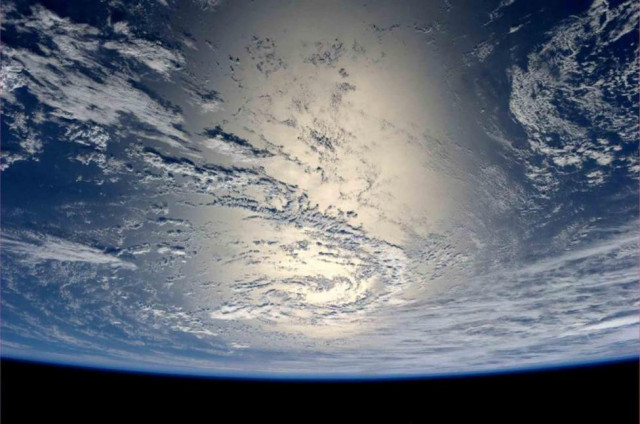This is what the Earth will look like in 250 million years
New supercontinent will form on our present-day Earth’s Pacific Ring of Fire

The sun reflects off the water in this picture taken by German astronaut Alexander Gerst from the International Space Station and sent on his Twitter feed July 17, 2014. REUTERS/Alexander Gerst/NASA
According to new simulations from Yale University researchers and Japan's Agency for Marine-Earth Science and Technology, North and South America will be squeezed together, the Caribbean Sea and Arctic Ocean will disappear and Asia will join the Americas due to movement of the earth's tectonic plates.
Earth sees hottest year-to-date in modern era: US
The enormous plates of the earth's crust have drifted together and apart over hundreds and millions of years. These variations, known as "true polar wander", are caused by changes in the planet's mass distribution. They are the Earth’s attempt to maintain rotational equilibrium.
The research is based on a theory called Orthoversion, according to which, after a supercontinent breaks up, the continents initially drift apart but become trapped within a north–south band of subduction where one plate dips below another.
Google Earth now lets you explore whole wide world in virtual reality
Published in the journal Nature, the research has also been supported by a paper published in the journal Geology by Dr Masaki Yoshida, a geologist based at Japan's Agency for Marine–Earth Science and Technology (JAMSTEC).
Using records of the Earth's magnetic field preserved in rocks, the researchers studied variations in the rotation of the Earth with respect to its spin axis to test the model. After combining this data with the knowledge of how supercontinents affect the Earth's motion, researchers were able to predict what they called ‘Amasia.’
The new supercontinent will form on our present-day Earth’s Pacific Ring of Fire. “After those water bodies close, we’re on our way to the next supercontinent,” said Dr Ross Mitchell, the paper’s lead author. “You’d have the Americas meeting Eurasia practically at the North Pole.”
The Earth’s surface is formed from seven major and several minor tectonic plates that wander around at speeds varying from a few millimetres to two centimetres a year, the same pace that a human nail grows. It’s the friction caused by plates grinding against each other that causes earthquakes.
The most recent supercontinent, Pangea (Greek for ‘All Lands’), was formed about 300 million years ago with Africa at its centre. It began breaking apart into the seven continents of today with the birth of the Atlantic Ocean about 100 million years later. Its immediate predecessors were Rodinia - which formed about 1 billion years ago - and Nuna, which formed about 1.8 billion years ago.
This article originally appeared on Mail Online.



















COMMENTS
Comments are moderated and generally will be posted if they are on-topic and not abusive.
For more information, please see our Comments FAQ